10 Iconic Photos of LGBTQ+ History From Getty Images
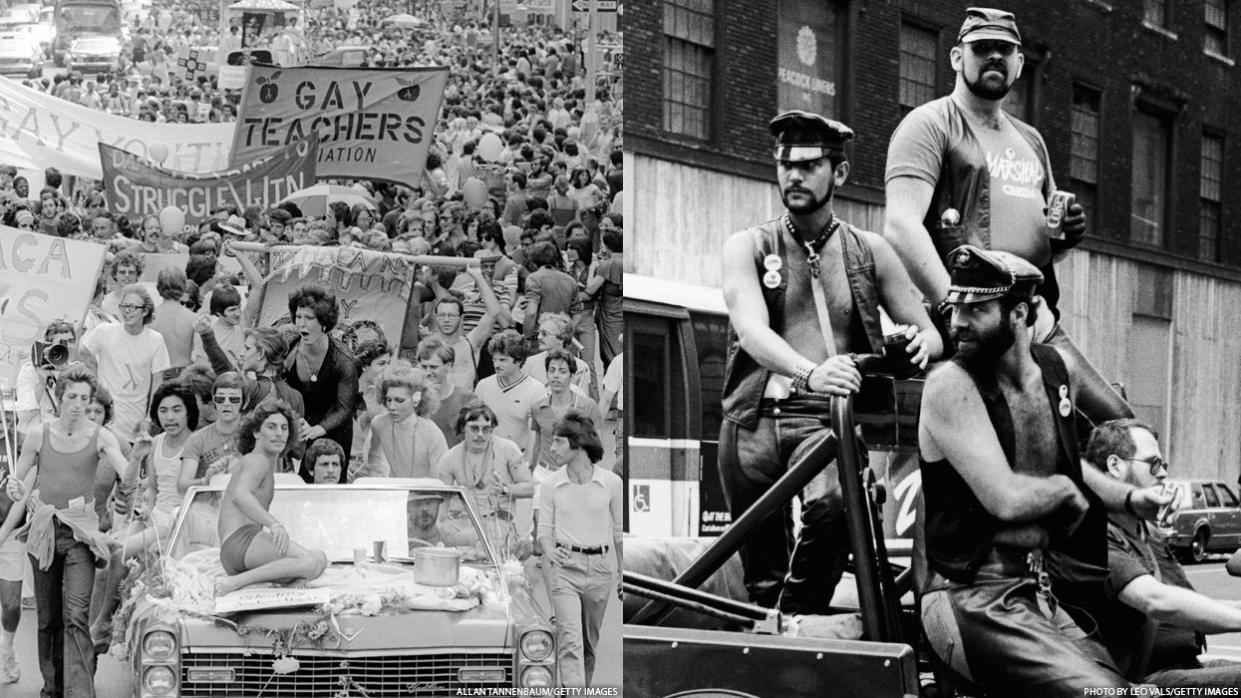
- Oops!Something went wrong.Please try again later.
Stonewall Celebrations, June 28, 1969, Fred W. McDarrah/Getty Images
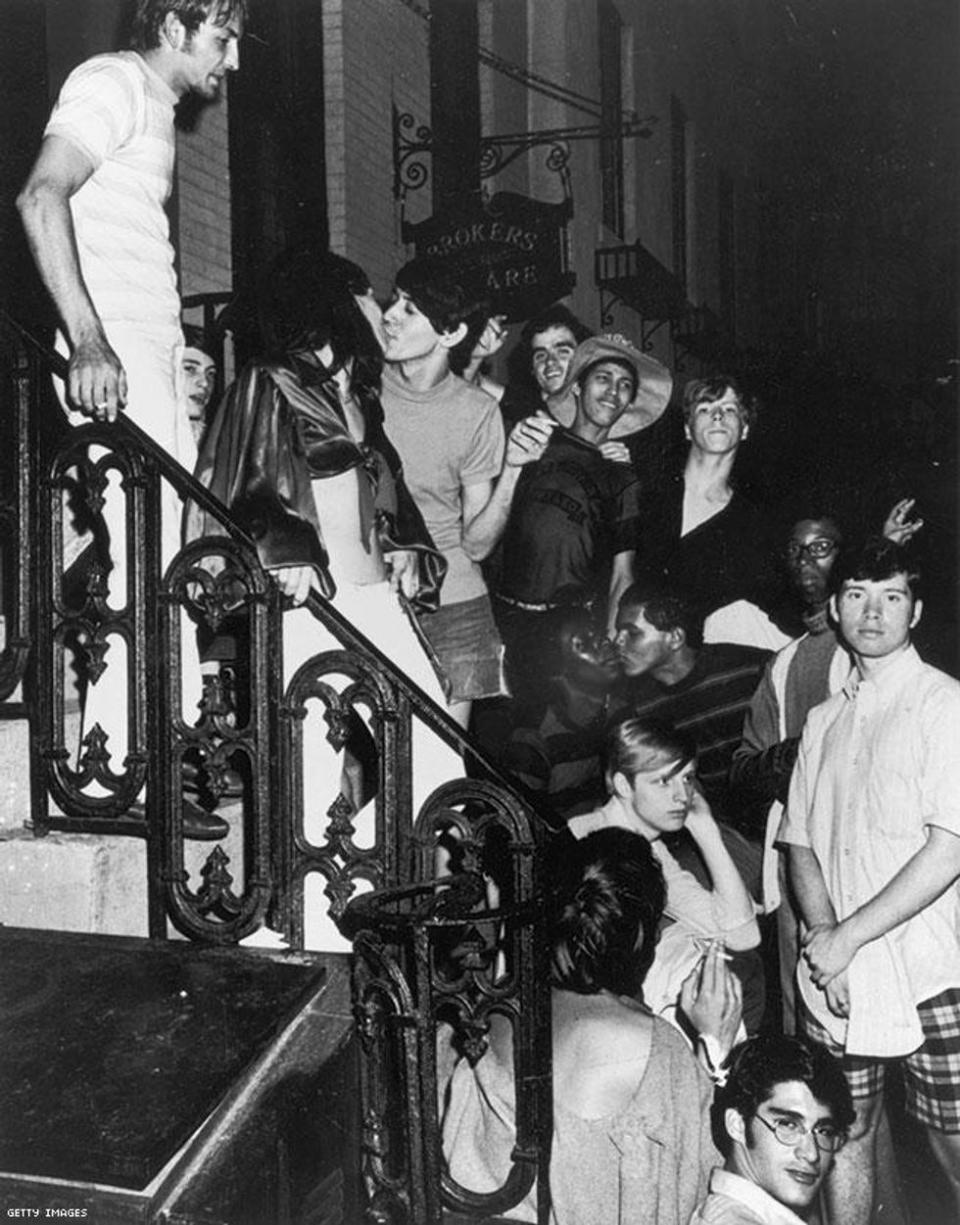
Thanks to Getty Images for this special curation of early LGBTQ images. And thanks for curator Shawn Waldron's illuminating comments.
"This selection presents a visual story about events that preceded the uprising, the celebratory events that followed, the politicization of the movement, and the changes that followed.
"Representation of the LGBTQIA+ community has changed for the better in comparison to the images from decades past. Though stereotypical views -- rainbow flags, hot pants, and drag -- still exist as a visual shorthand, the breadth of representation has expanded nearly to the point of banality, which in this case is a positive.
"Diversity in imagery is vital -- people want to seem themselves and their loved ones reflected in the imagery and advertising they see." -- Shawn Waldron
Did this group of kids hang out here immediately after the riots? Did the location of Stonewall take on importance right away, or over a long period of time?
That group of kids was hanging out there before, during and after the riots. The Stonewall was a popular club located in a prime location, so on any given Saturday night Sheridan Square was filled with queer street kids, homeless men, drag queens, prostitutes and various hustlers. Don't forget that Sylvia Rivera was only 17 when the riot happened!
Shawn Waldron: The first night was a mixture of the Stonewall patrons and the regular neighborhood crowd. The numbers vary widely, but there were hundreds of people involved and/or watching. Craig Rodwell notified all of the major newspapers while the riot was happening, so it was widely publicized, which drew a steady stream of protesters, activists and gawkers back to the neighborhood throughout the day and into the evening. It immediately became the focal point.
Policeman Arresting Two Men in Drag, 1962, Bettmann
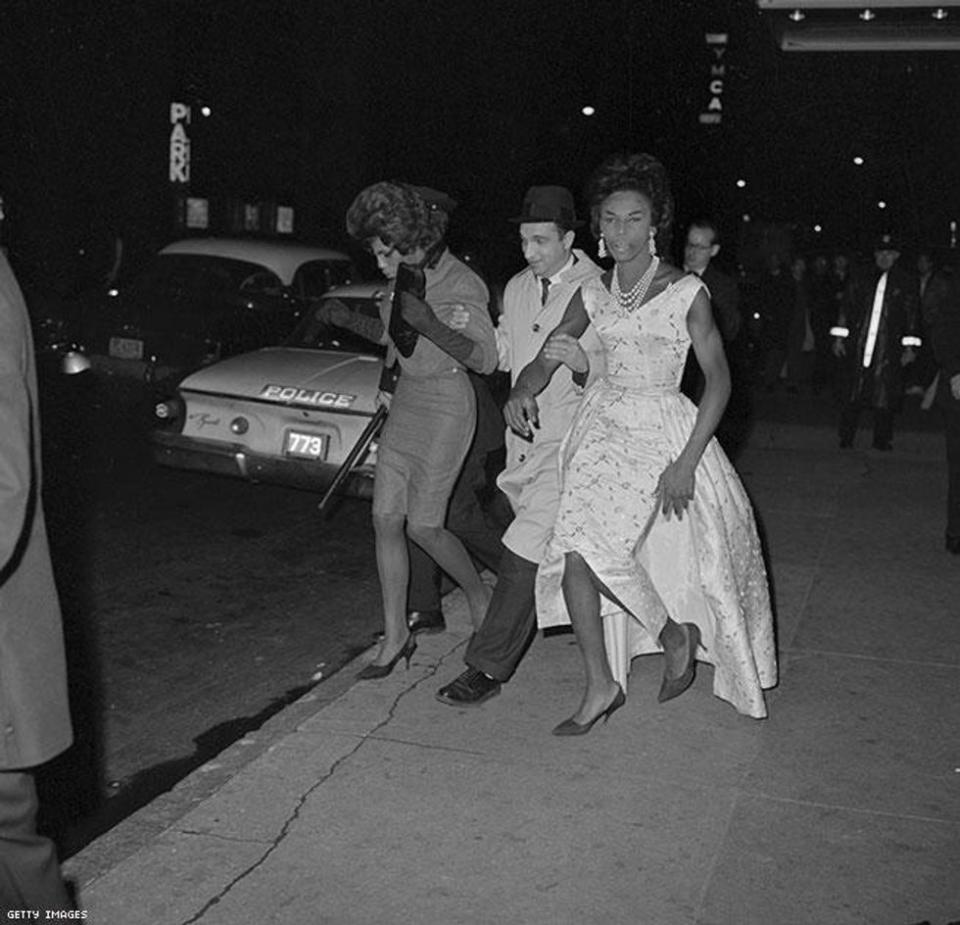
Do you have background information on drag laws? When exactly did the laws against transvestism loosen up?
Shawn Waldron: In the early 1960s, Mayor Robert F. Wagner, Jr. began an antigay campaign attributed to a puritanical effort to clean up the city's streets in advance of the 1964 World's Fair. The campaign closed gay bars by systematically revoking liquor licenses and simultaneously targeted gay men through entrapment. Plain-clothed NYPD officers would strike up a conversation or buy the target a drink in a bar or public park. If the drink was accepted or there appeared a possibility that the two men may leave together, the target was arrested for solicitation. The campaign was brought to an end after Mayor Lindsay entered office in 1966 (partly due to lobbying from Dick Leitsch and Mattachine).
Drag queens (using the language of the era) were the frequent targets of the NYPD's Public Morals Section, which enforced all laws concerning vice and gambling, which also included homosexuality. In June 1969, the Public Morals Section of the First Division (which included Greenwich Village) was under the command of Deputy Inspector Seymour Pine. Trans people were often arrested under one of the Loitering laws [specifically 240.35, section 4] if they were found, "...masked or in any manner disguised by unusual or unnatural attire or facial alteration, loiters, remains or congregates in a public place with other persons so masked or disguised, or knowingly permits or aids persons so masked or disguised to congregate in a public place..."
To answer your question, the law did not loosen up; the statue remains on the books and is enforceable. What changed--and this may sound like I'm simplifying things, but I'm not--what changed is that Stonewall drew a line in the sand. A group of men and women sat down for a public panel on the twentieth anniversary of the riot to talk about its effects. Among them was Deputy Inspector Pine, who had retired from the department in 1976. During the discussion, which was broadcast on NPR, he clearly explained how Stonewall shifted the balance of power:
You felt, well, two guys -- and that's all very often all we sent in would be two men -- could handle two hundred people. I mean, you tell them to leave and they leave, or you say show me your identification and they all take out their identification and file out and that's it. And you say, okay, "You're not a man, you're a woman (or you vice versa), wait over there." I mean, this was the kind of power that you have and you never gave it a second thought...After the Stonewall incident things were completely changed from what they had previously been. They suddenly were not submissive anymore. They now suddenly had gained a new type of courage. And it seemed as if they didn't care anymore about whether their identities were made known. We were now dealing with human beings.
Pine's words lay plain the power of courage, resistance, and opposition. I remember how they knocked me over when I first read them. In 1969, being outed had real world consequences; it could destroy personal relationships and cost someone their livelihood, their home or both. The fear was deep and profound; the police used it to their advantage, until suddenly they couldn't. Dario Modon, a cross dresser that was clubbed over the head by police during the riot, said, "Before Stonewall, we had no rights. Police treated us like dogs. I remember thinking, when it was over, that I never had to be afraid again."
Dick Leitsch, 1965, Louis Liotta/New York Post Archives /© NYP Holdings, Inc. via Getty Images
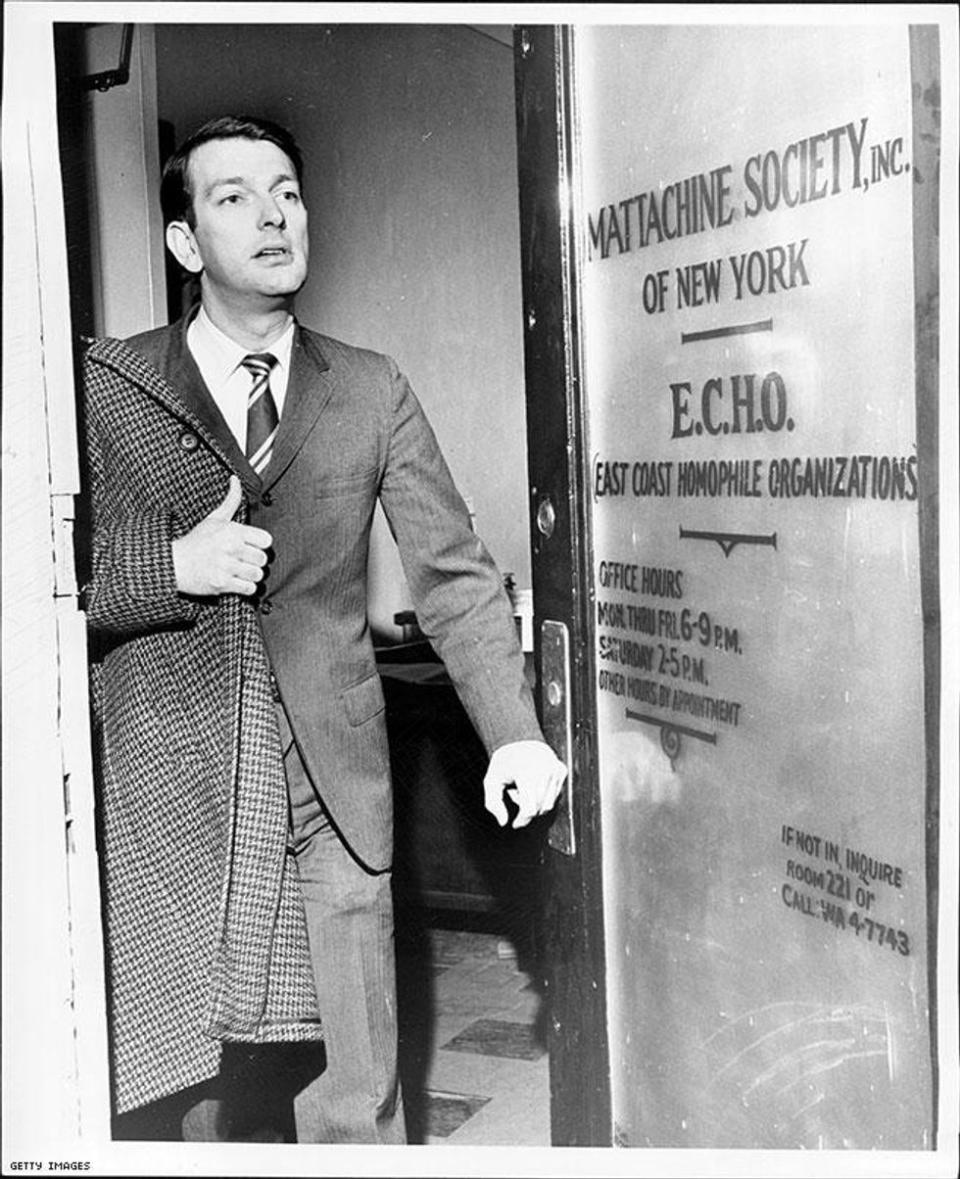
Do you know where the Mattachine Society was? Its offices?
According to my research, the MSNY office was at 1133 Broadway from 1959 to at least 1968 (which is also its most active period). Mattachine shared the Broadway office with ECHO and the Daughters of Bilitis. By 1972, it had moved downtown to 59 Christopher St.
Gay Pride Day, June 29, 1975, Fred W. McDarrah/Getty Images
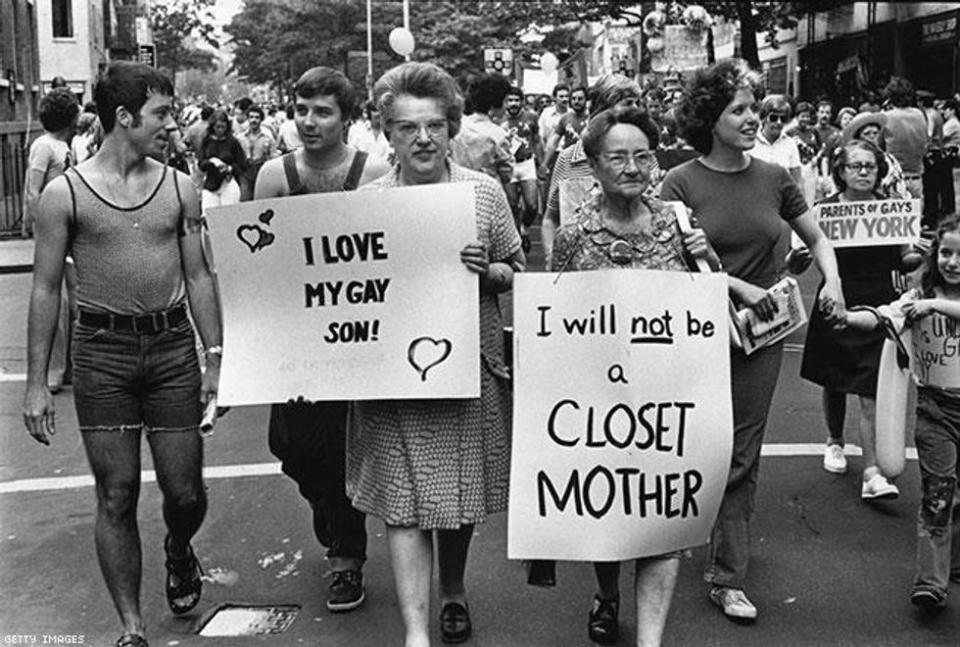
This was before PFLAG; were there any organized groups of parents before PFLAG, or just brave souls like this?
PFLAG's origins date back to 1972; its first formal meeting was held in a Greenwich Village church in March 1973. Founded as Parents of Gays (you can see the name on one of the signs in this photo), the organization was started by three cisgender couples with queer children: Jeanne and Jules Manford, Amy and Dick Ashworth, and Bob and Elaine Benov. [Jeanne was the driving force and is credited as the founder on PFLAG's site; Dick can be seen in this photo, which is also in the exhibit. Amy Ashworth was a tireless supporter and activist on behalf of gay rights until her death in 2017]
Gay Pride, June 1, 1983, Jill Freedman/Getty Images
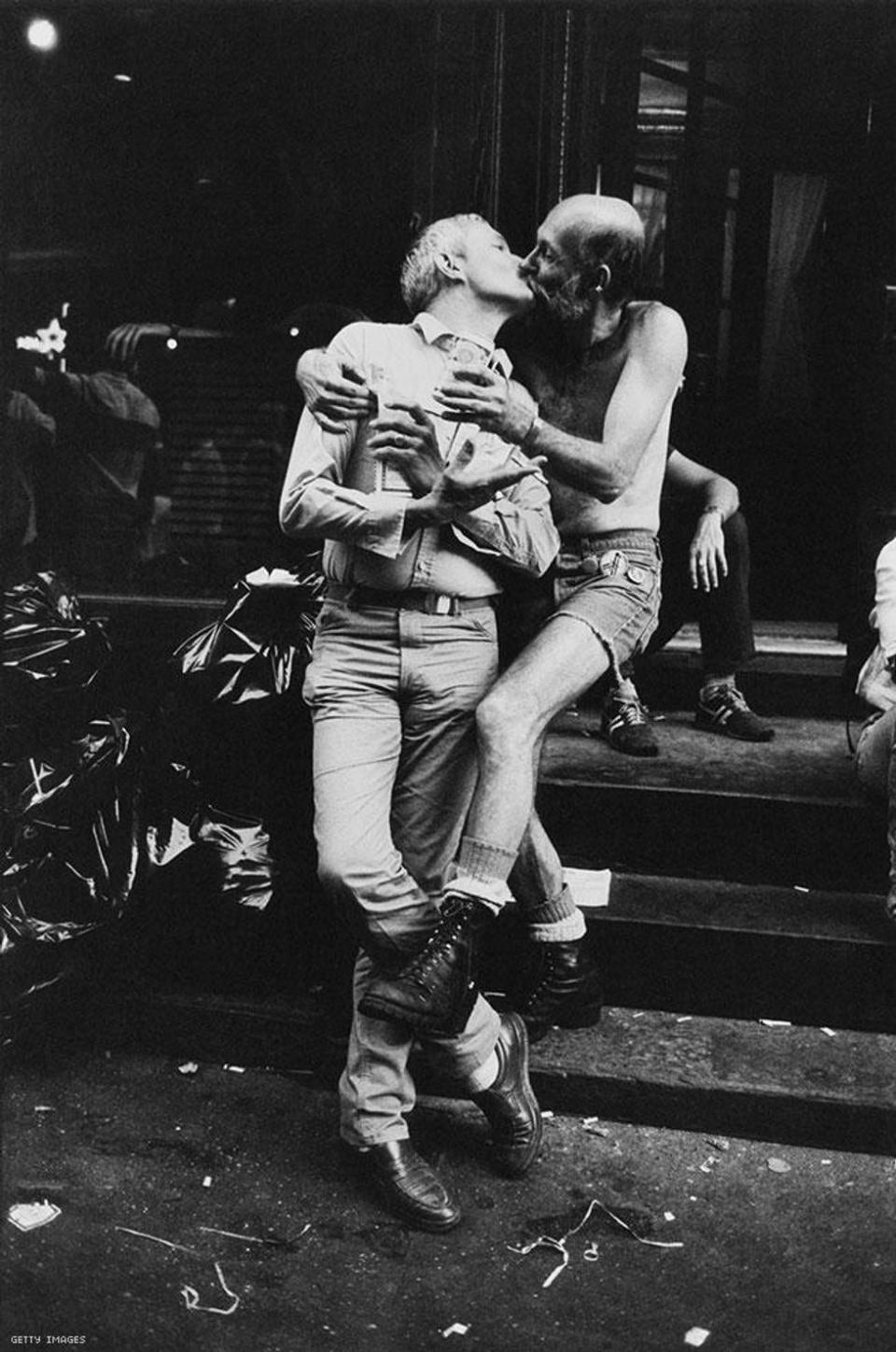
STAR At Gay Pride Day March, June 24, 1973, Fred W. McDarrah/Getty Images
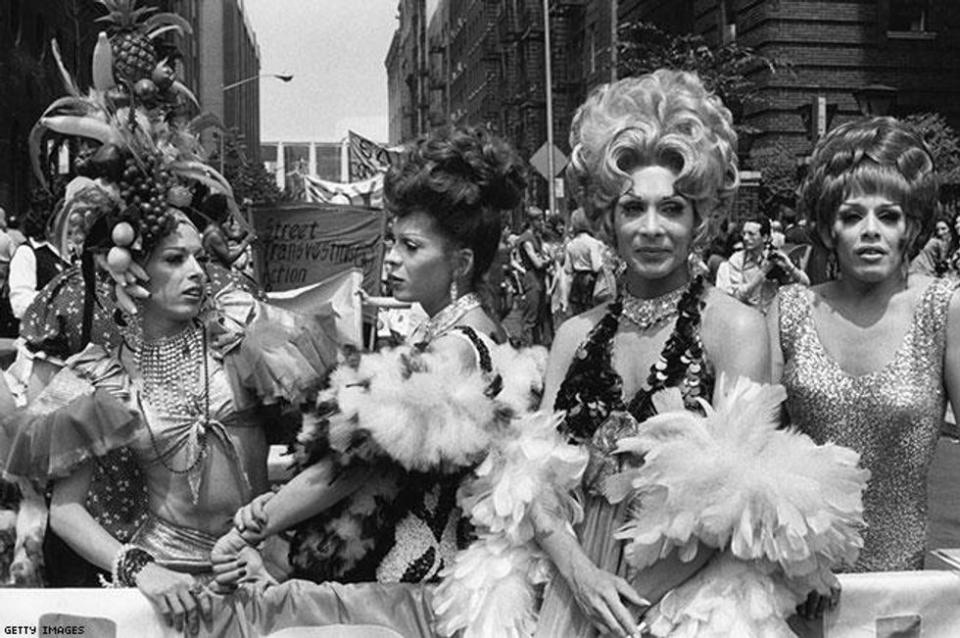
Any information on how Street Transvestites Action Revolutionaries started? Any of the big names in trans activism involved?
S.T.A.R. was founded by Marsha P Johnson and Sylvia Rivera, which are definitely two big names. The City of New York recently announced the pair will be honored with a memorial near the Stonewall site; the process of choosing the artist is currently underway.
After a failed occupation at NYU in October 1970, Rivera drafted a document (made public by activist and writer Reina Gossett) with the headline, "Gay Power When Do We Want It? Or Do We?" It was a call to arms aimed at the police and their relentless harassment of, "our gay brothers and sisters." Stonewall had shown that change was possible, but not without a fight. The documents final line punctuated Rivera's frustration and determination: You people run if you want to, but we are tired of running. We intend to fight for our rights until we get them.
According to Rivera, S.T.A.R. was founded to support gay people living on the streets or in dangerous situations. Rivera and Johnson had both experienced periods of homelessness and knew the dangers firsthand. One of S.T.A.R.'s first acts was securing a four-room apartment in the East Village that became known as S.T.A.R. House. Marsha was the house mother; a rotating cast of approximately twenty people lived there as needed. Making rent was a perennial challenge; they lost the apartment after eighteen months.
By 1972, the driving forces of the queer rights movement, now firmly under the control of white, middle-class gays and lesbians, had succeeded in pushing trans people of color, including those that had been at the forefront of the movement just a few years earlier, to the sidelines. At a post-parade rally in June 1973, Sylvia Rivera took to the stage and blasted the audience for their lack of support for the trans community. Her defiance and truth-telling were met with boos, although her final cheer for Gay Power -- her preferred rallying cry -- was applauded. Soon after, Rivera left New York City and S.T.A.R. was effectively over.
Gay Pride Rally In Washington Square Park, July 27, 1969, Fred W. McDarrah/Getty Images
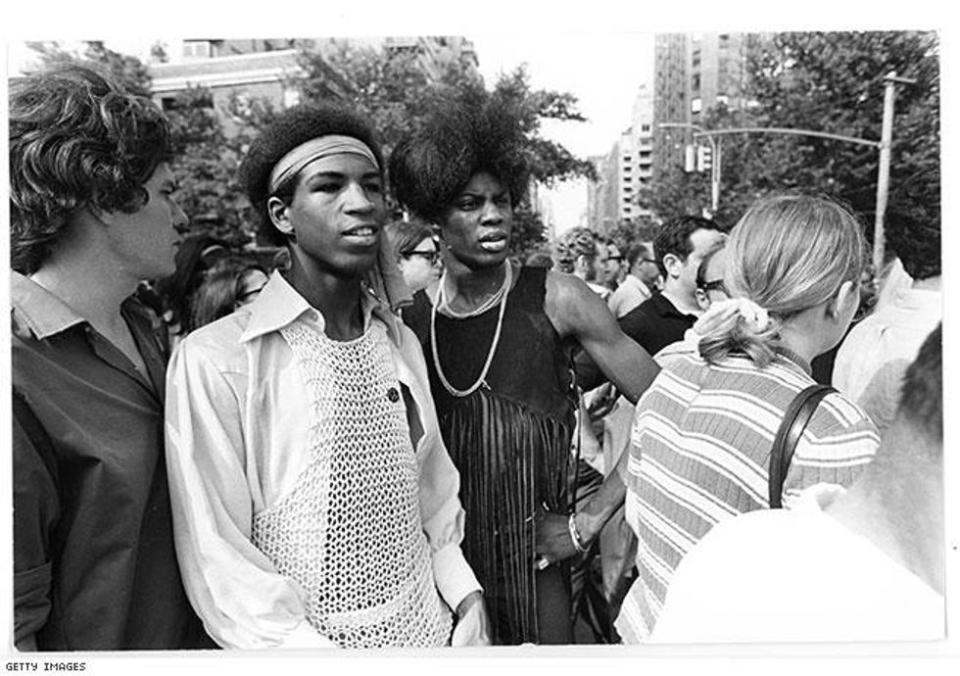
Gay & Lesbian Pride Parade, 1980, Arpadi/IMAGES/Getty Images
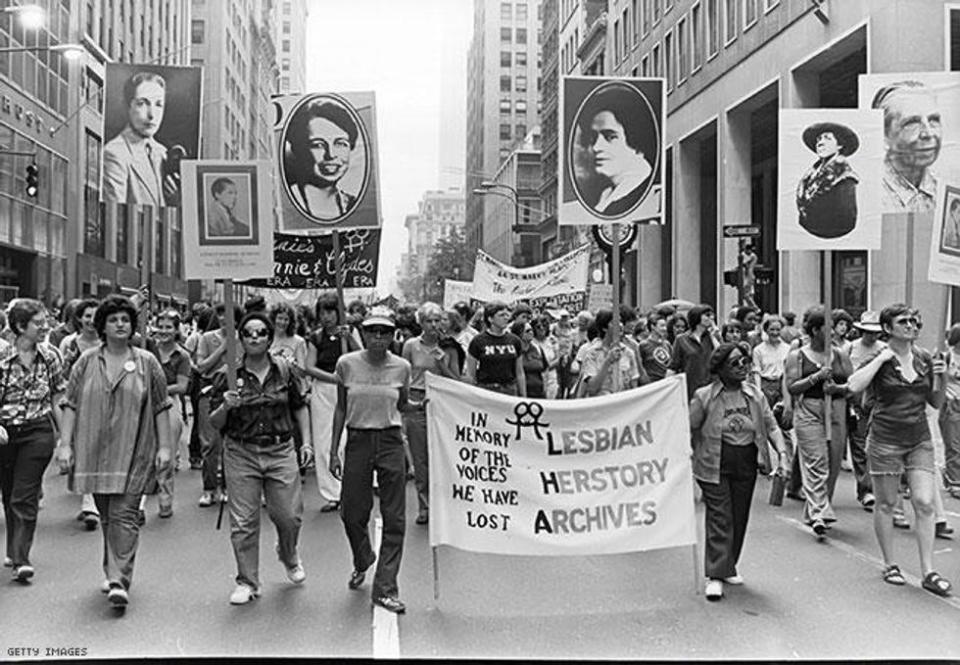
Gay Pride, June 1, 1984, Barbara Alper/Getty Images
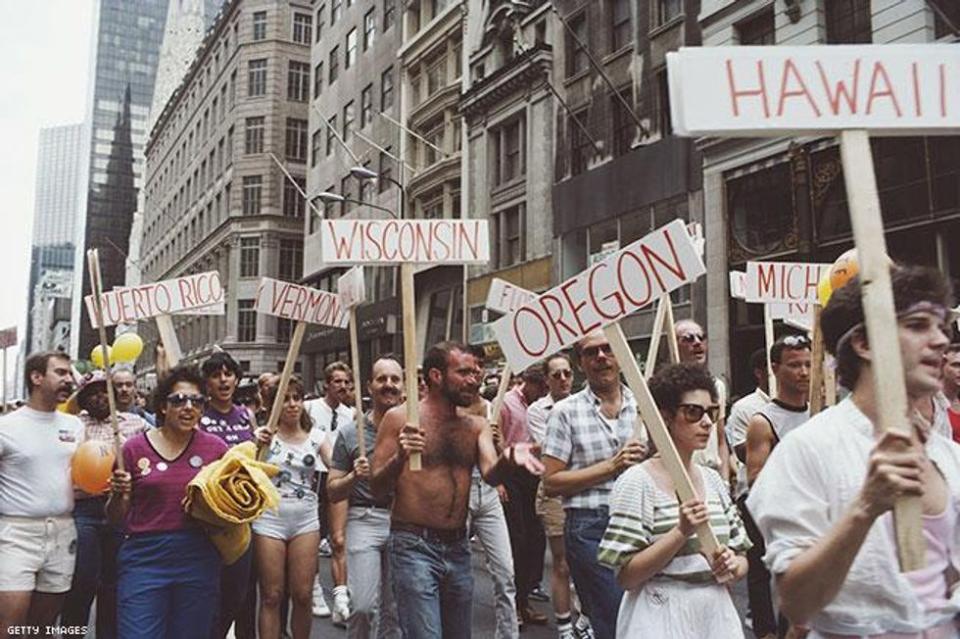
Gay Pride, June 1, 1982, Barbara Alper/Getty Images
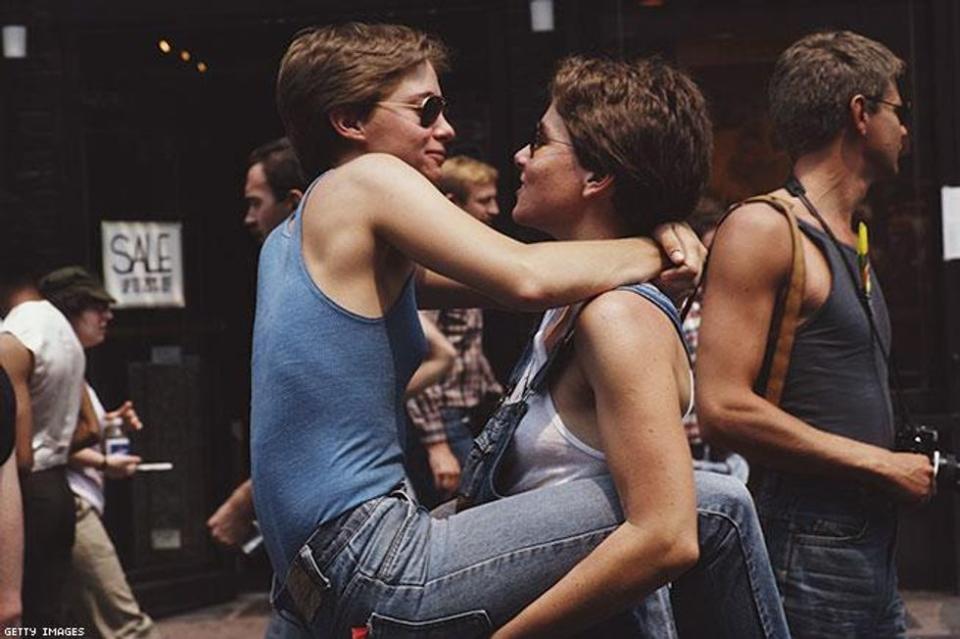
When did it become legal for same-sex affection to take place in public?
One of the immediate effects of Stonewall was an increase in the public displays of affection, especially in 'safe' neighborhoods and environments. First-hand accounts from Stonewall are filled with narratives of liberation. Sylvia Rivera said that during the riot there was a moment when she began screaming, "Freedom! We're free at last!" The day after the riot, queer couples were seen holding hands and kissing in the street near the Stonewall. Collectively, these men and women -- some who had spent decades in the shadows -- were declaring their queerness to the world, consequences be damned.

